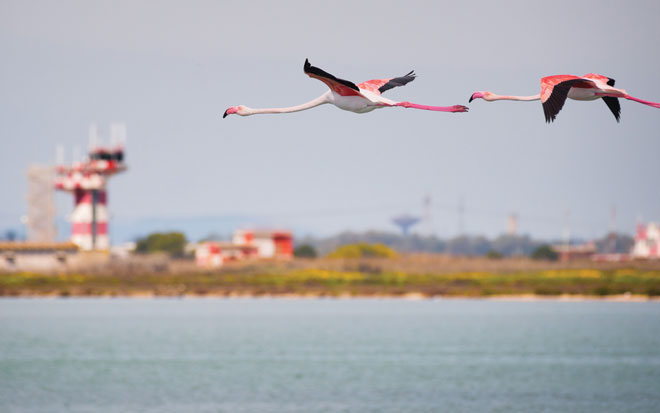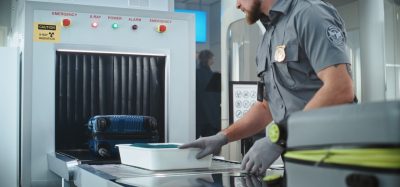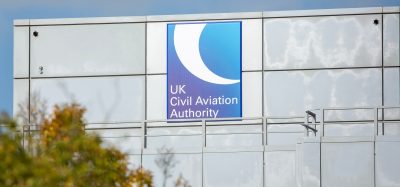Airport Wildlife Management: Mitigating wildlife hazards
Posted: 24 May 2016 | Anastasios Anagnostopoulos, Head of Wildlife and Landscaping in the Environmental Services Department at Athens International Airport S.A. | No comments yet
Anastasios Anagnostopoulos, Head of Wildlife and Landscaping in the Environmental Services Department at Athens International Airport S.A., explains how birdstrikes and wildlife hazard control can be integrated into an airport’s safety management system…


During the last decade, there has been increasing interest for more comprehensive and effective Aerodrome Wildlife Management Plans (AWMPs) that go beyond compliance with ICAO’s standards and recommended practices (SARPs). The recent update of a number of ICAO documents related to aviation safety1,2 and wildlife management3 – and also the publication of new documents4 – highlights the need for AWMPs to be harmonised with the Aviation Safety Management System (ASMS) and follow the new approach towards a performance based safety model.
The most recent ICAO provisions regarding the ASMS2 aim to create and enhance a safety culture at organisational, professional and national levels, including all stakeholders involved in aviation safety, based on four components and 12 elements. As such, the various airport wildlife management aspects should be understood and addressed in the same light.
However, as with other aspects of aviation safety, the creation of such a culture in the field of wildlife management is not restricted to the national level, since a great number of wildlife species extend beyond national borders. ICAO and regional rule-makers, such as the European Aviation Safety Agency, are working together with regional and international committees and organisations (ACI, World Birdstrike Association, etc.), towards the extension of this culture beyond the borders of each State in order to create a global shield in the direction of a safer aviation industry.
Join us live: Shaping the Next Generation of Hold Baggage and Air Cargo Screening
Join us live for an insightful webinar on 11th December at 14:00 GMT, in collaboration with Smiths Detection, as we explore the strategic balance of operational efficiency, regulatory compliance, and sustainability in high-volume security environments.
This session offers a focused look into future-proofing your security strategy.
Key learning points
- Cost Reduction: Strategies to minimize bag travel time while simultaneously reducing operational costs.
- Regulatory Roadmap: Insights into the next wave of regulatory changes and their impact on future investment decisions.
- Sustainable Systems: Practical approaches to building sustainability into security systems and lowering the total cost of ownership (TCO).
- Scalable Solutions: Real-world examples of scalable systems supporting current airport growth and preparing for tomorrow.
Register now for expert insights, case studies, and actionable strategies on operational efficiency!
In line with the ASMS principles, a number of aspects should be considered when developing an AWMP.
Policy and objectives
Management commitment and responsibility
Within each state the assessment of the wildlife hazards at – and in the vicinity of – an aerodrome starts at the national level. The State Safety Programme shall include in the legislative framework the establishment of a national plan and procedures related to wildlife management, not only at the aerodromes and in their vicinity, but throughout the state, in relation to the national biodiversity conservation and planning policies, or to alternatively establish a national committee with clearly defined roles regarding the development and oversight of a national plan3.
Τhe state national plan shall delegate the respective responsibilities to each aerodrome for the establishment of an AWMP in compliance with the ICAO SARPs regarding both the ASMS and Wildlife Strike Hazard Reduction.
From their side, the aerodromes shall comply with the provisions of the national plan obtaining support for the preparation and implementation of their AWMP, when necessary, from the national committee.
Accountability
Within the AWMP, the roles, accountabilities and responsibilities regarding the persons, functions and committees (e.g. airport wildlife strike committee), have to be sound and complementary to those included in the ASMS. A clear flow of actions and definition of the levels of management with authority to make decisions regarding wildlife risk tolerability should also be included in the AWMP, together with the relationships to the other safety groups (e.g. Safety Action Group, Runway Safety Team, etc.). In case external resources are engaged to support airport personnel, their roles and responsibilities should also be included in the AWMP.
Appointment of key personnel
Competent personnel should be accountable for the development, implementation and review of the AWMP. In order to optimise the effectiveness of all actions related to wildlife management, it is recommended to assign the responsibility for their coordination to a single competent person, regardless of their level within the hierarchy. Split responsibilities – for example, active control coordinated by Aerodrome Fire and Rescue Services personnel, while habitat management is coordinated by the Airfield Operations personnel – may lead to gaps regarding the complementarity of measures and consequently affect the overall performance of the AWMP.
Emergency response planning
Further to regular planning related to the standard hazards recorded at, or in the vicinity of, an aerodrome and the respective risk management, an emergency response plan should be included in the AWMP to cope with temporal and unpredictable increases of wildlife hazards.
Documentation
All aspects related to wildlife management, together with the respective accountabilities and responsibilities should be documented in the AWMP. The documentation should include cross references to the respective aspects of the ASMS (i.e. the components and their respective elements).
Wildlife strike risk management
Hazard identification
Wildlife hazard identification is based on a combination of reactive, proactive and predictive data collection that should include not only the wildlife species already involved in strikes, but also those present at, or in the vicinity of, the aerodrome, that are not yet involved in strikes. Hazard identification should also include all areas of, or in the vicinity of, the aerodrome that may potentially attract wildlife that will interfere with aviation. Mapping these areas in relation to the aerodrome (e.g. take-off and approach trapezoids, obstacle limitation surfaces, 3km and 8km radius cycles from the reference point of the aerodrome, etc.) is essential for the risk assessment and management procedure.
Wildlife strike risk assessment and mitigation
According to the results of the wildlife hazard identification, the wildlife strike risk assessment should follow, applying the proper prioritisation. The likelihood (probability) of a strike and the possible consequences (severity) shall be combined to produce the risk index for each identified hazard (main wildlife species), separately, and to define the respective risk tolerability. The risk assessment methodology should be clearly described in the AWMP. Furthermore, a tolerability matrix, including at least those species already involved in strikes at, or in the vicinity of, the aerodrome shall also be included.
Risk analysis should be performed on macro-scale (overall aerodrome operations) and micro-scale (e.g. daily operations, individual movements, etc.) and should include the aircraft types using the aerodrome in order to consider the airframe and engine certification requirements, the traffic data (number of movements and distribution during the day), the use of the runways, etc. The contribution of the aircraft operators, Air Traffic Control and any other wildlife strike risk management stakeholder, to this process is strongly advised
Following the risk assessment procedure, risk management actions should be designed and applied. Based on the tolerability matrix, risk mitigation measures shall be documented per hazard, regardless of whether some of these measures will be common for a number of hazards. Mitigation measures should follow both the macro-scale and micro-scale risk analysis.
Safety assurance
Safety performance monitoring and measurement
Monitoring the trends of the wildlife strikes per hazard on a continual basis is a useful tool for monitoring the performance of the risk mitigation measures. Target levels and alert triggers for the revision of the risk mitigation plan should also be considered.
While the various wildlife strike indexes are lagging Safety Performance Indicators (SPIs), the systematic counting of wildlife species for monitoring the trends regarding their activities and the recording of the effectiveness of the measures to manage their presence at, or in the vicinity of, the aerodrome, is providing leading SPIs that support the proactive and predictive approach of the AWMP.
A performance-based AWMP should include lagging, leading and, if possible, predictive key performance indicators selected from the various SPIs that have been used to monitor the performance of the risk mitigation measures.
The management of change
Any change in the organisation will primarily affect the ASMS. Once the AWMP is associated with the ASMS, the processes included in the latter with the purpose of identifying and managing any risks arising from such changes, will provide feedback for the review of the former. Changes in the environment at, or in the vicinity of, the aerodrome (e.g. new buildings/facilities, changes in land uses) or changes to its operations (e.g. increase of traffic, new aircraft types, etc.) may introduce new hazards and associated risks, or change the existing ones. The AWMP should include processes that will be able to identify and address such challenges.
Continuous improvement
The inclusion of various SPIs which monitor the performance of the risk management measures support a self-evaluation of the AWMP. Internal audits by the ASMS’s accountable manager, the quality control department or any other department appointed to audit the proper implementation of the corporate procedures, will contribute to identifying areas for improvement.
External audits, either by authorities or by specialists in the field of wildlife management, can supplement the internal audits and further contribute to continuous improvement.
AWMP promotion
Training and education
All personnel involved in wildlife strike risk assessment and mitigation actions should share the same understanding regarding potential hazards, risks posed by the hazards, and risk mitigation/management measures, by receiving the respective training. The requirements for initial training, annual recurrent training, recertification training at standard intervals and advanced or specialised training for personnel according to the accountabilities and responsibilities assigned and the level in the hierarchy, should be documented in the AWMP.
The department responsible for the administration of the human resources should keep records of the training received by each staff member, the duration of the training, certificates and other valuable information, such as when the training per subject was performed, the trainer, the curriculum, when the next training should be received and when recertification should be awarded. If such a department does not exist, these records should be kept by the key personnel accountable for the AWMP.
Training and education should include formal wildlife management courses, participation in workshops, exchange of experience with other aerodromes, participation in conferences and international organisations, etc. Training on the ASMS principles and function should also be provided to the key personnel of the AWMP.
Communication
Participation of the key AWMP personnel in safety committees such as the Safety Action Group and the Runway Safety Team, will help to provide feedback regarding other aspects of the ASMS and to promote the importance of the AWMP within the ASMS. Further communication of the AWMP aspects to aerodrome personnel and the other safety management stakeholders should be achieved through bulletins, newsletters, and demonstration of the AWMP principles, function and achievements, during direct contacts, workshops and conferences (local, national or international).
The aspects mentioned above based on the ASMS Components and their respective elements are not intended to replace ICAO SARPs on Wildlife Strike Hazard Reduction, but rather to strengthen the AWMP’s compliance with them, while providing cross references between the two documents.
References
- ICAO ANNEX 14 to the Convention on International Civil Aviation: AERODROMES Volume I – Aerodrome Design and Operation (Fifth Edition – 2009)
- ICAO Doc 9859 AN/474: Safety Management Manual (SMM) (Third Edition – 2013)
- ICAO Doc 91379137-AN/898 part 3: Airport Services Manual – Part 3 “Wildlife Control and Reduction” (Fourth Edition – 2012)
- ICAO ANNEX 19 to the Convention on International Civil Aviation: Safety Management (First Edition – July 2013)
Biography
Anastasios Anagnostopoulos is a field biologist and since 1997 has been Head of Wildlife and Landscaping within the Environmental Services Department of Athens International Airport S.A. His main tasks include the preservation of biodiversity and wildlife management. He is an ACI APEX Safety Reviewer and Regional Vice Chairman for Europe at the World Birdstrike Association.
Join our free webinar: Revolutionising India’s travel experience through the Digi Yatra biometric programme.
Air travel is booming, and airports worldwide need to move passengers faster and more efficiently. Join the Digi Yatra Foundation and IDEMIA to discover how this groundbreaking initiative has already enabled over 60 million seamless domestic journeys using biometric identity management.
Date: 16 Dec | Time: 09:00 GMT
rEGISTER NOW TO SECURE YOUR SPOT
Can’t attend live? No worries – register to receive the recording post-event.

















